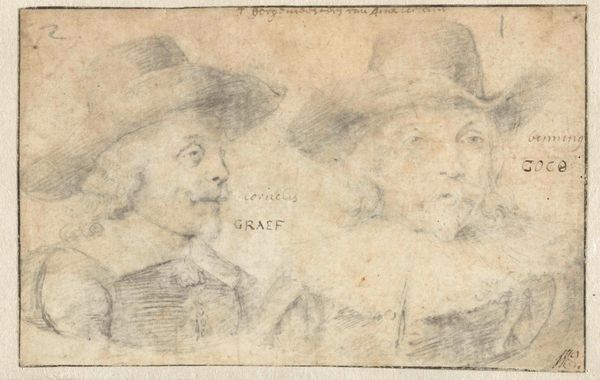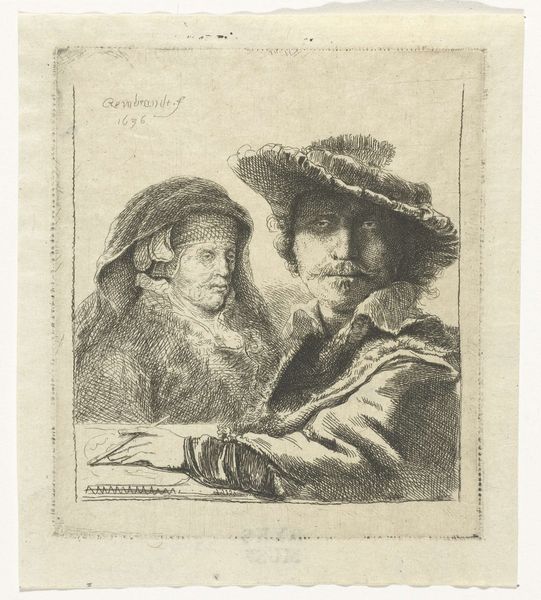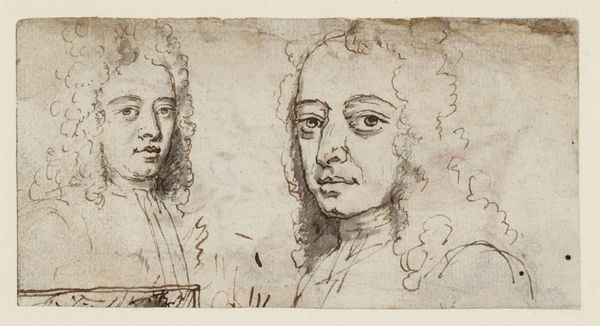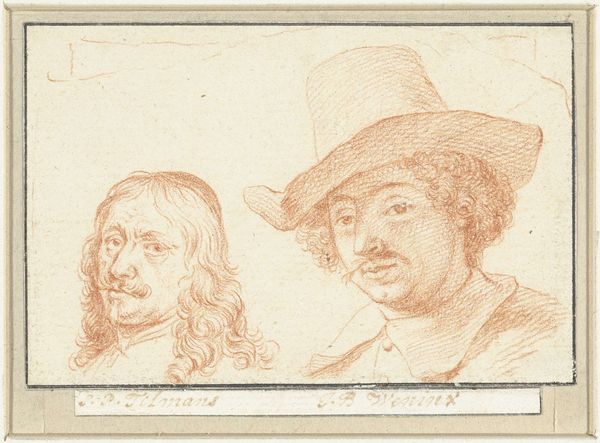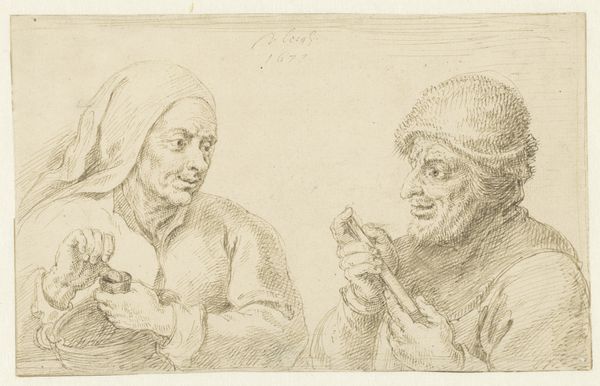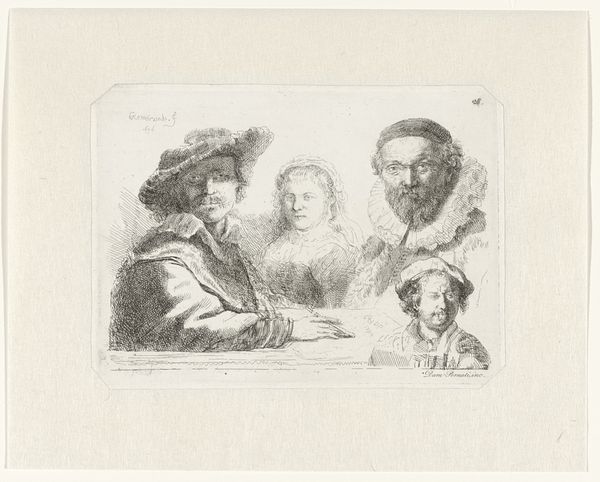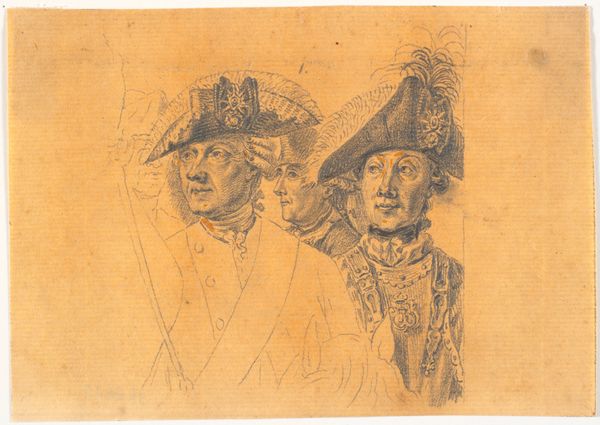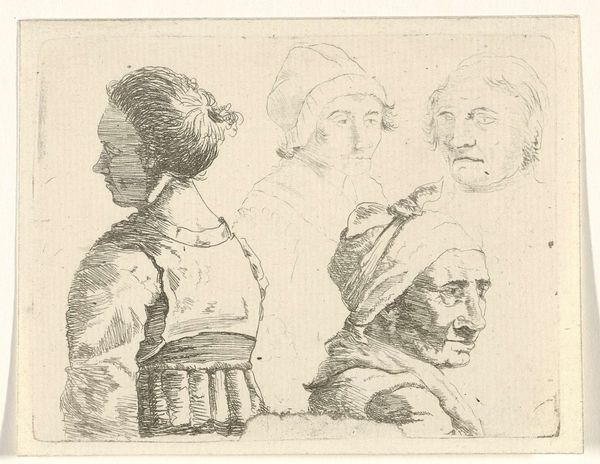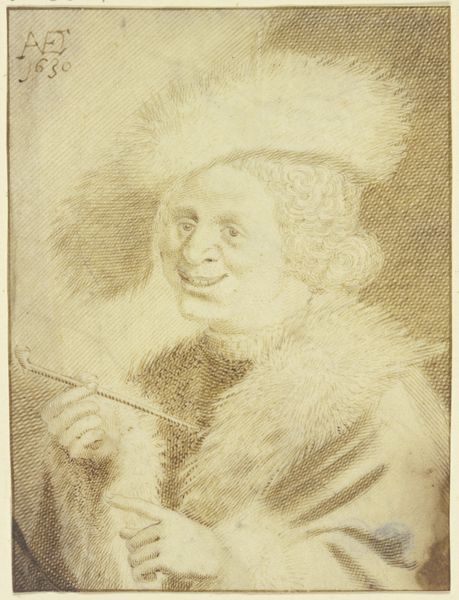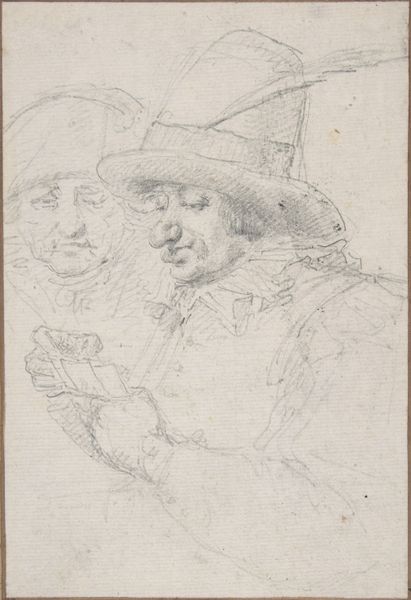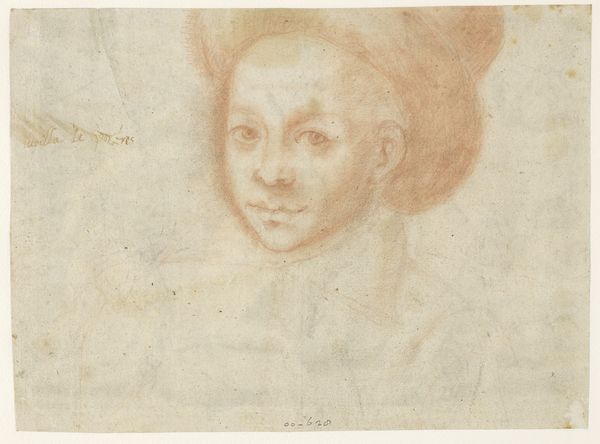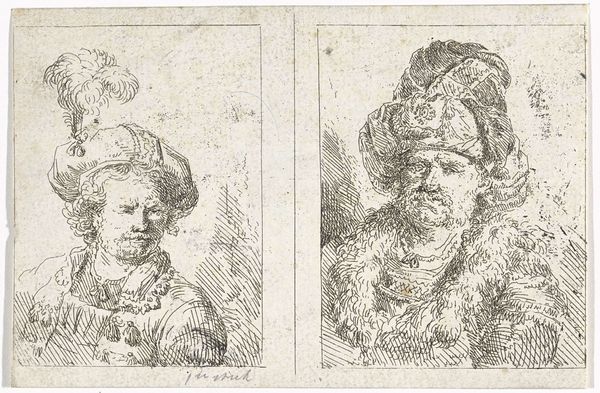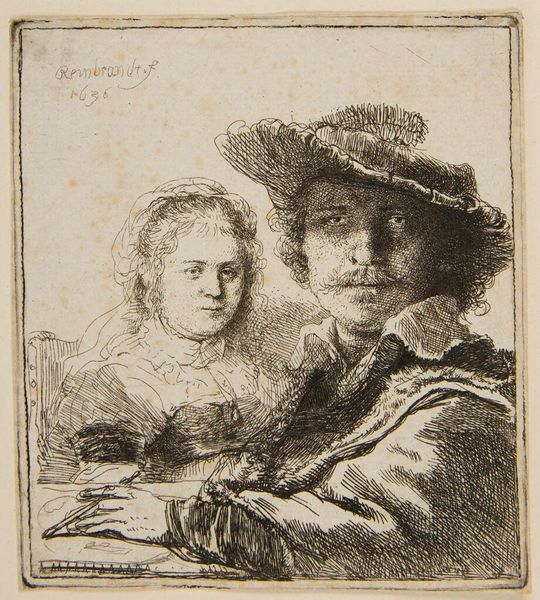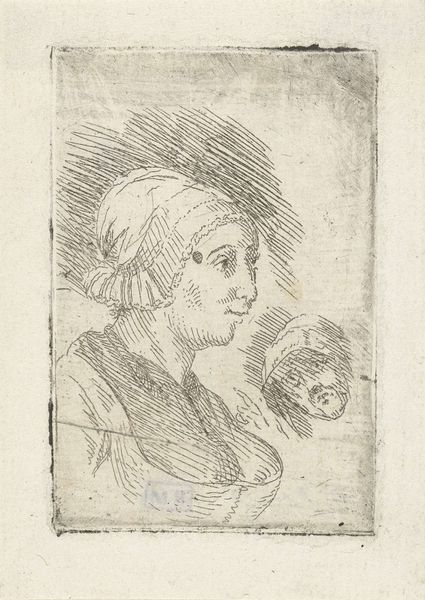
Portretten van Joris Backer en Jan Huydecoper van Maarseveen 1642 - 1700
0:00
0:00
drawing, pencil
#
portrait
#
drawing
#
dutch-golden-age
#
charcoal drawing
#
pencil drawing
#
pencil
#
genre-painting
#
realism
Dimensions: height 93 mm, width 145 mm
Copyright: Rijks Museum: Open Domain
Editor: This drawing, housed here at the Rijksmuseum, is entitled "Portretten van Joris Backer en Jan Huydecoper van Maarseveen". It's listed as being created sometime between 1642 and 1700 by an anonymous artist, and it appears to be rendered in pencil and charcoal. What strikes me is the somewhat understated presentation, quite different from the lavish paintings of the Dutch Golden Age, despite portraying what look to be prominent figures. What do you see in it? Curator: You've touched on a crucial point. While portraiture during the Dutch Golden Age was indeed often associated with opulent displays of wealth and status, this drawing offers a different perspective. Consider the evolving role of civic identity. These aren't royal figures; they're likely prominent citizens of the Dutch Republic. The restraint you observe could reflect a shift towards valuing civic virtue and individual accomplishment over aristocratic flamboyance. Who do you think decided that portraits such as these were worthy of a museum? Editor: Hmm, good question. The people who created this collection and maybe those two people’s descendants, deciding that their legacy should be remembered? How does it fit within the bigger picture of artistic production at that time? Curator: Precisely! The creation of a national collection like the one here at the Rijksmuseum certainly contributes to the meaning we derive from viewing this today. It's not just about these two men anymore. It’s also about the institutional forces that decided their likenesses—in this modest medium, no less—were valuable to preserve and present. What this drawing may lack in traditional artistic prowess, it gains in revealing the social and political motivations behind what is collected and how it is displayed for the public. Editor: That’s fascinating. So it’s as much about what society values as it is about art itself. I'll definitely look at art historical context more deeply from now on. Thanks for sharing your perspective. Curator: My pleasure. I've enjoyed considering the interplay of individual representation and broader cultural narratives with you. It helps reveal the true power of images in the public sphere.
Comments
No comments
Be the first to comment and join the conversation on the ultimate creative platform.
